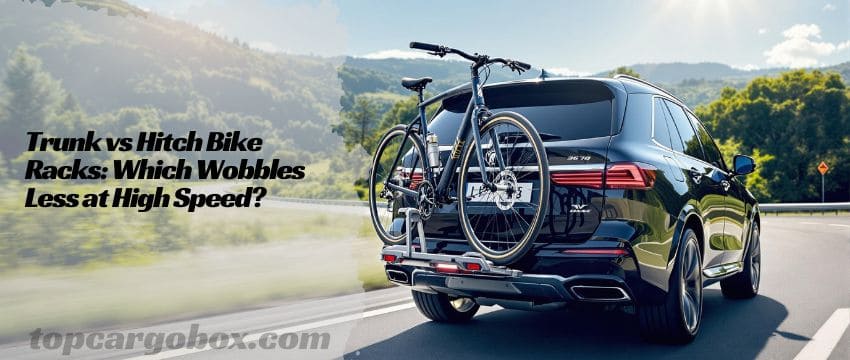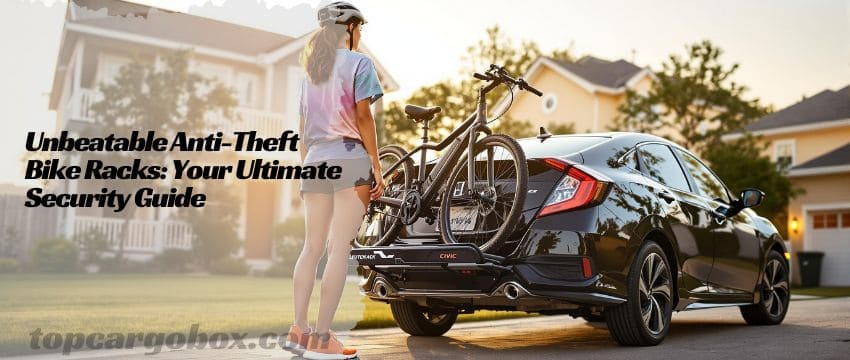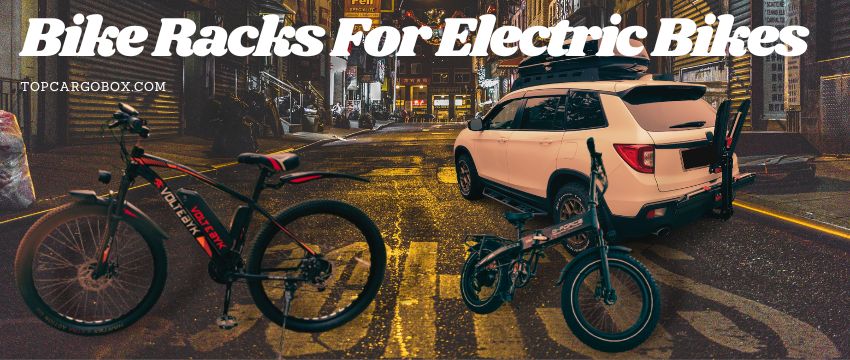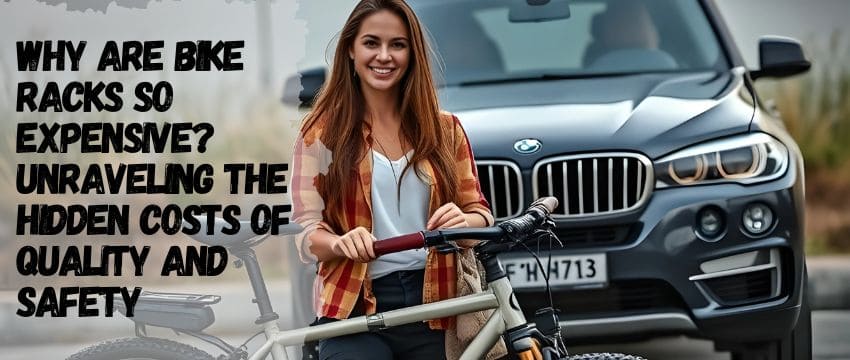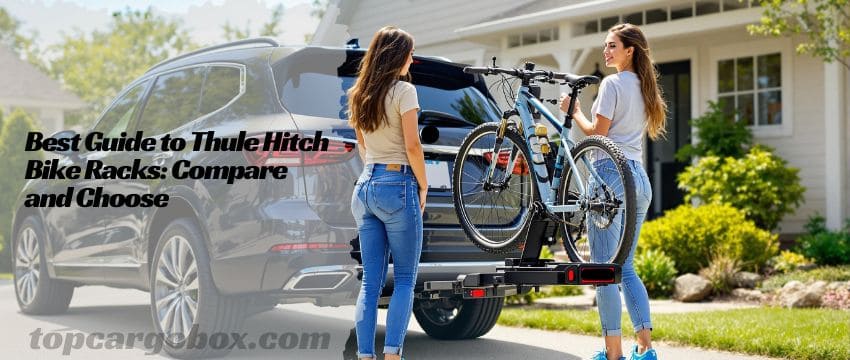What’s up, car bike rack owners? Ever been cruising down the highway, vibing to your tunes, only to glance in the rearview mirror and see your precious bikes doing an unsettling shimmy on the back of your car? That heart-sinking feeling, the sudden grip on the steering wheel, wondering if your carbon steed is about to become roadkill… yeah, we’ve all been there. Bike rack wobble isn’t just annoying; it’s nerve-wracking and can feel downright dangerous.
For real, who needs that extra stress on a trip meant for fun? You invested in those bikes and the rack to enhance your adventures, not turn every drive into a white-knuckle experience. The big question gnawing at you is probably this: Which type of rack is less likely to turn your highway miles into a wobble-fest – the trunk-mounted kind you clipped on or the hitch-mounted one you slid into your receiver? Let’s cut through the confusion and get down to the nitty-gritty of stability at speed.
Why Your Bike Rack Decides to Dance (The Science of the Wobble)
Okay, let’s break down why this wobble happens in the first place. It’s not just magic, or your bikes being dramatic. Think of your car driving down the road. It’s constantly experiencing forces: wind pushing against it, vibrations from the engine and road surface, bumps, and even the aerodynamic drag swirling around the back end (that’s the wake turbulence). Your bike rack, sticking out behind the car, is basically catching all these forces like a sail. Now, imagine those bikes mounted on the rack. They add significant weight and surface area, acting like big levers amplifying any movement.
Essentially, you’ve created a pendulum hanging off the back of your vehicle. The further the bikes stick out, and the less rigidly the rack is attached to the car, the easier it is for that pendulum to start swinging. Ever notice how wobble often gets worse the faster you go? That’s because aerodynamic forces increase exponentially with speed. At 30 mph, it might be a slight tremor. Push it to 70 mph on the interstate, and that tremor can become a full-on, anxiety-inducing sway. It’s physics, plain and simple, and understanding this is key to choosing the rack that fights it best.
The Trunk-Mounted Rack: Convenience vs. The Wobble Battle
Alright, let’s talk trunk racks. How’s it going with that old-school strap-on carrier? You probably chose it because, let’s be honest, they’re super convenient and budget-friendly. No hitch required! Just hook the top clips over your trunk or hatch lid, secure the straps underneath, tighten everything down, load the bikes, add more straps… you get the drill. They fold up small for storage, which is awesome. But here’s the rub, and you’ve likely felt it: Trunk racks are fundamentally fighting an uphill battle against wobble. Why? Their entire connection to your car relies on those straps, clips, and the structural integrity of your car’s sheet metal – specifically, your trunk lid or hatch.
Think about it: Your trunk lid isn’t designed to handle heavy, dynamic loads bouncing around several feet behind the car. It’s meant to open and close. Those straps stretch over time, especially when loaded. Hitting a bump? The whole assembly can shift and bounce. Strong crosswind? The rack can twist slightly against the straps. Even if you crank those straps down like you’re wrestling an alligator (been there!), there’s always some inherent flex and give in the system. It’s like trying to hold something perfectly still using bungee cords – totally possible to get it secure, but any big jolt or sustained force will make it move. Real-life example: Remember that time you drove over that seemingly small bridge expansion joint? The sudden jolt probably made your bikes sway violently for a few seconds. That’s the trunk rack’s weak point showing. For more tips on minimizing this, check out our deep dive on preventing bike rack swaying.
How Trunk Racks Attach (And Why That’s the Issue)
The core vulnerability lies in the attachment method. Those padded hooks sit on relatively thin metal or plastic (your trunk/hatch edge). The lower straps cinch down, but they’re often pulling against the lower bumper area, which isn’t structurally solid either. Everything relies on friction and tension. Over time, straps wear, hooks can slightly deform the edge they sit on, and the whole connection just isn’t rock-solid. It’s a bit like hanging a heavy picture with masking tape instead of a proper hook – it might hold for a while, but you wouldn’t trust it in an earthquake.
Weight Distribution Matters (A Lot!)
Where the rack places the weight of your bikes is crucial. Trunk racks typically position the bikes’ weight relatively high up on the rear of the vehicle, often partially blocking your rear window. This high center of gravity makes them more susceptible to being tipped or rocked by side winds or uneven road surfaces. Ever feel your car handling change slightly when the bikes are loaded? That high weight can subtly affect your vehicle’s balance, contributing to that unsettling feeling and making wobble more pronounced.
The Straps: Your First Line of Defense (And Failure)
Those straps are doing all the heavy lifting, literally. Constant tension, UV exposure, temperature changes – they take a beating. A strap loosening even a tiny bit during a long drive can be the start of a noticeable wobble. Regularly checking and tightening them is non-negotiable, but it’s a band-aid on a structural limitation. You become the constant monitor, which kinda sucks the fun out of the drive.
The Hitch-Mounted Rack: Built for Stability on the Highway
Now, let’s switch gears to hitch racks. These babies slide directly into the hitch receiver tube bolted firmly to your car’s frame. That’s a game-changer. Instead of relying on straps and sheet metal, the connection is metal-on-metal, secured by a hitch pin and often a locking mechanism. Think about the difference: It’s like bolting a shelf directly into the studs of a wall versus hanging it with picture wire. Which one feels more secure when you bump into it? Exactly. This direct connection to the vehicle’s structural skeleton provides a massively more stable foundation.
The forces acting on the bikes and rack – wind, bumps, vibration – are transferred directly into the car’s frame, which is designed to handle significant loads. There’s simply far less flex and give in the system right from the get-go. You can literally feel the difference when you drive. Less bouncing, less swaying, especially noticeable when passing big trucks or driving in windy conditions. It’s legit peace of mind. Wondering about the difference in wobble potential? We compare them head-to-head in this article: Hitch or Trunk Bike Racks: The Ultimate Comparison.
The Rock-Solid Connection: Hitch Receiver Magic
The hitch receiver is a chunk of heavy-duty steel welded or bolted to reinforced points on your car’s unibody or frame. It’s designed for towing trailers, which exert way more force than a few bikes. Inserting the rack’s hitch stinger into this receiver creates an incredibly rigid link. A properly tightened anti-wobble hitch tightener (a cam or threaded device that eliminates the tiny bit of slop between the stinger and receiver walls) is essential and makes this connection virtually rock-solid. No straps stretching, no hooks slipping – just solid metal doing its job.
Lower Center of Gravity = Less Sway
Hitch racks generally position the bikes lower down, closer to the level of the bumper. This lower center of gravity significantly reduces the leverage that wind and bumps have to induce sway. Think about a tall glass versus a short, wide one – which one tips over easier? Hitch racks are that short, wide glass. They sit behind the bumper, not on top of the trunk, making them inherently more stable against lateral forces. It’s physics working for you instead of against you.
Platform vs. Hanging Hitch Racks: Does Style Affect Wobble?
You’ll find two main hitch rack types: hanging (bikes dangle from the top tube) and platform (bikes rest on wheel trays, secured by arms). So, which wobbles less? Generally, platform racks have a slight edge in ultimate stability, especially with heavier bikes like e-bikes. Why? The bikes are supported at their strongest points (the wheels) and clamped lower down on the frame. This minimizes the “pendulum” effect. Hanging racks can allow the bike to swing slightly fore/aft if not perfectly secured, though modern designs minimize this. But here’s the key: Both hitch-mounted styles benefit immensely from that rigid receiver connection, making both significantly more stable at speed than any trunk-mounted option. Carrying e-bikes? Their weight makes stability even more critical. See our picks for sturdy racks: 6 Best Bike Racks for Electric Bikes.
Putting Them to the Test: Real-World High-Speed Scenarios
Okay, theory is great, but how do they actually perform when the rubber meets the road? Let’s imagine some common situations:
- The Big Rig Pass: You’re cruising in the right lane, a massive semi-truck roars past you in the left lane. The sudden blast of wind buffets your car. With a trunk rack, you’ll likely feel a significant push and see the bikes sway side-to-side. It takes a few seconds to settle. With a properly installed hitch rack (anti-wobble tightened!), you’ll feel the push, but the bikes will barely budge. Seriously, the difference is night and day. The rigid connection absorbs the gust without translating it into major bike movement.
- The Expansion Joint Shuffle: Driving over those rhythmic bumps on bridges or concrete highways. Trunk racks tend to bounce and amplify each jolt, making the bikes jiggle continuously. Hitch racks transmit the vibration too, but it’s a firmer, more controlled movement. The bikes stay much more planted, with minimal independent bouncing or sway.
- Long Highway Grind: Hours on the interstate, constant wind noise. A trunk rack might develop a low-level hum or buzz as straps vibrate, and you might notice a persistent, slight sway in the mirror, demanding constant vigilance. A good hitch rack? You might actually forget the bikes are back there after a while. The stability is just that much more consistent, reducing driver fatigue significantly. Who knew peace of mind could be so tangible?
The Myth of “It’s Fine Until…”
“Oh, my trunk rack is fine, I just don’t go over 65 mph.” Fair enough, but let’s be real. Speed limits are higher in many places, and sometimes you need to keep up with traffic. Unexpected wind gusts happen at any speed. A bumpy back road can be just as unsettling as the highway. Choosing a rack based on hoping conditions stay perfect isn’t ideal. Wouldn’t you prefer the confidence to drive whatever speed the situation demands, knowing your gear is secure? The hitch rack provides that broader safety margin.
So, Hitch Wins Hands Down… But What About the Downsides?
Alright, so the stability crown clearly goes to the hitch rack for high-speed driving. That’s awesome! But hold up, it’s not all sunshine and rainbows. Hitch racks come with their own considerations, and it’s totally fair to weigh them:
- The Hitch Itself: This is the biggie. You need a hitch receiver installed on your car. If you don’t have one, that’s an added cost ($150-$500+) and potentially a professional installation. It’s an extra step (and expense) compared to just buying a trunk rack. Bummer? Maybe initially, but many see it as a valuable investment for long-term versatility (towing small trailers, cargo carriers too).
- Cost: Hitch racks themselves are generally more expensive than trunk racks. You’re paying for heavier materials and that superior engineering. Is it worth it? For stability, security, and peace of mind at speed, most frequent travelers would shout “Absolutely!” Wondering why racks cost what they do? We explain: Why Are Bike Racks So Expensive? (Answered).
- Weight & Bulk: Hitch racks are heavier and bulkier. Storing them takes up more space than a folded trunk rack. Loading them in and out of the hitch receiver requires a bit more grunt.
- Access: Depending on the design, some hitch racks can partially block your rear hatch or trunk access, especially when loaded with bikes. Many modern ones feature tilt-away mechanisms to solve this, but it’s an extra step.
- Ground Clearance: They hang lower, so you need to be mindful of steep driveways or high curbs. Dragging the rack is no big deal once or twice, but it sucks if it happens often.
It’s a trade-off: superior stability and security vs. higher initial cost and needing a hitch. You good with that trade? For many, especially those who regularly drive highways or carry expensive bikes, the answer is yes. Check out a balanced view of the downsides: The Drawbacks of Bike Racks (And How to Deal).
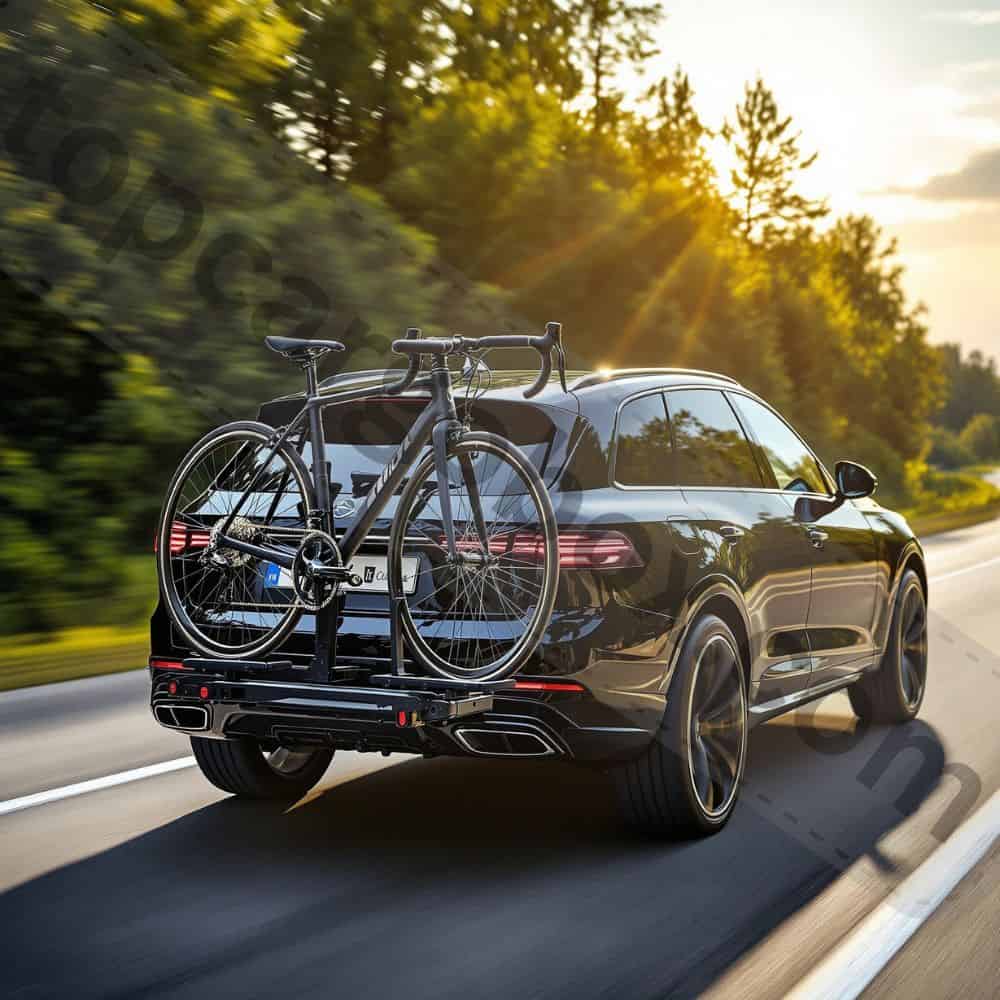
Beyond Wobble: Other Factors to Consider
While wobble at speed is a HUGE factor, especially for safety and your sanity, it’s not the only thing to think about when choosing between trunk and hitch:
- Bike Safety & Security: Hitch racks, especially platform styles, often provide better support for modern bike frames (no top tube? No problem!). They also tend to have more robust integrated locking systems (cables locking bikes to the rack, and the rack locked to the hitch) compared to the often flimsier locks on trunk racks. Protecting your investment matters.
- Vehicle Compatibility: Trunk racks need specific contours to fit well. If your car has a spoiler, a unique trunk shape, or a camera, finding a compatible trunk rack can be tricky or impossible. Hitch racks care about the hitch receiver size (1.25″ or 2″) and sometimes tongue weight rating, but are generally less fussy about the car’s body style. Need a trunk rack without a hitch? See Thule options: Best Thule Trunk Bike Rack Without Hitch.
- Ease of Use: Trunk racks win on initial setup simplicity (no hitch needed) and storage size. Hitch racks win on stability and often ease of loading bikes (especially platform styles – just roll them on!). What’s your priority?
- Capacity & Bike Types: Hitch racks typically handle more bikes (3, 4, even 5) and heavier bikes (like e-bikes) much more easily and safely than trunk racks. Carrying heavy e-bikes? Don’t risk it on a flimsy trunk rack. Our e-bike rack guide is essential: 6 Best Bike Racks for Electric Bikes.
- Car Washing: Can you wash your car with the rack attached? Sometimes, but it’s usually easier to remove it. Hitch racks are generally quicker to remove and reinstall than unstrapping a trunk rack. Get the lowdown here: Washing Your Car With a Bike Rack Attached.
Key Features & Specs: Trunk vs Hitch Racks At a Glance
Here’s a quick rundown of the main characteristics of each type:
Feature/Specification | Trunk-Mounted Rack | Hitch-Mounted Rack |
|---|---|---|
Attachment Method | Straps & Hooks to Trunk/Hatch Lid & Bumper | Stinger inserted into Vehicle Hitch Receiver Tube |
Primary Stability Source | Friction/Tension of Straps | Rigid Metal-to-Metal Connection to Vehicle Frame |
Wobble Potential (High Speed) | Higher (Due to strap flex & high mounting) | Significantly Lower (Rigid, low connection) |
Requires Vehicle Hitch? | No | Yes |
Typical Cost (Rack Only) | $ (Lower – $50-$250) | $$-$$$ (Higher – $200-$1000+) |
Installation Complexity | Moderate (Straps can be fiddly) | Simple (Insert stinger, tighten anti-wobble, pin) |
Weight Capacity (Per Bike) | Lower (Often ~35 lbs) | Higher (Often 40-60+ lbs, critical for e-bikes) |
Max Bikes Supported | Usually 2-3 | Usually 2-5 |
Frame Compatibility | Needs top tube (Problematic for many modern bikes) | Excellent (Platform racks handle any frame) |
Integrated Locking | Often Basic Cable or None | Usually Robust Cables + Hitch Lock |
Blocks Rear Access? | Usually Yes (Fully) | Often Yes, but many Tilt Away for Access |
Storage Size | Smaller (Folds compactly) | Larger/Bulkier |
Ease of Bike Loading | Can be awkward (lifting over trunk) | Generally Easier (Especially platform racks) |
Ground Clearance | Higher (Mounted on trunk) | Lower (Mounted near bumper) |
Making Your Choice: What’s Best For YOUR Rides?
So, how do you decide? Take it easy, let’s break it down based on your actual needs:
- Choose a TRUNK Rack if: You rarely drive on highways (mostly slow city streets/short trips), you’re on a super tight budget and cannot afford a hitch + rack, you only carry 1-2 lighter bikes occasionally, you have zero storage space, and your car has a compatible trunk shape. Accept that wobble at higher speeds is likely and manage it carefully. Check your car’s compatibility first!
- Choose a HITCH Rack if: You frequently drive on highways or long distances, you value stability and safety above all else, you carry expensive, heavy, or oddly shaped bikes (especially e-bikes!), you need to carry 3+ bikes, you want better security, you already have a hitch or are willing to install one. The investment buys you significant peace of mind.
Honestly, if highway wobble is your primary concern and you drive those speeds regularly, the hitch rack is the clear, performance-driven winner. It’s designed from the ground up to handle those forces. Don’t just take my word for it, see how top Thule hitches stack up: Best Thule Hitch Bike Racks: Compare & Choose or Best 4 Thule Hitch Bike Racks Compared.
Conclusion: Stability Wins the Race
Let’s hang out with the truth: When you’re pushing 70 mph down the open road, battling crosswinds and semi-truck turbulence, the hitch-mounted bike rack is hands-down the champion for minimizing that terrifying wobble. Its direct, rigid connection to your car’s frame provides a foundation of stability that trunk racks, with their strap-dependent, sheet-metal-hooked design, simply cannot match. No way around the physics. Sure, getting a hitch installed adds cost and a hitch rack is a bigger initial investment.
But dude, compare that to the cost of potential bike damage, the constant anxiety of watching your gear sway in the mirror, or worse. That peace of mind knowing your bikes are planted securely? Priceless. If you’re an occasional, low-speed user on a tight budget, a trunk rack can work with diligent care. But for anyone serious about road trips, highway miles, or carrying valuable bikes safely and securely, the hitch rack is the legit, wobble-fighting solution. Get one, tighten that anti-wobble device properly, and hit the road with confidence!
Your Burning Bike Rack Wobble Questions, Answered!
Can you completely eliminate wobble on a trunk rack at high speed?
Nah, probably not entirely, and that’s the honest truth. You can definitely minimize it a lot through serious diligence: meticulously cleaning contact points, cranking straps down incredibly tight (checking them every single stop!), using extra tie-downs like a cargo net or bungees over the bikes themselves, and strategically loading the heaviest bike closest to the car. But here’s the thing: the fundamental design – relying on straps and the car’s sheet metal – has inherent flex. At true highway speeds (65-75+ mph), especially in wind or over bumps, some movement is almost inevitable. It might be reduced to a minor vibration instead of a scary sway, but absolute rigidity like a hitch rack provides? That’s a long shot with a trunk setup. For real, prevention is key: Prevent Bike Rack Swaying.
Are hitch racks really stable enough for heavy electric bikes?
Absolutely, yes! In fact, a robust hitch rack (especially a platform style) is the recommended way to transport e-bikes. Why? Because their design directly addresses the challenges: the rigid hitch connection handles the high weight, platform trays support the wheels (strongest points), and lower clamping minimizes leverage. Crucially, always check the rack’s per-bike weight capacity – don’t just look at the total rack capacity. Many racks specifically designed for e-bikes support 60 lbs or more per bike. Never, ever risk putting a heavy e-bike on a trunk rack not explicitly rated for it – that’s asking for failure. Find e-bike approved racks here: 6 Best Bike Racks for Electric Bikes.
Is it okay to wash my car with the bike rack attached?
How’s it going with a soapy dilemma? Technically, sometimes yes, but it’s generally not ideal and requires caution. Check your rack’s manual first! If you proceed, avoid high-pressure spray directly on the rack’s pivot points, locks, or ratchets, as it can force water and grit inside, causing wear or corrosion. Be extra gentle around the hitch receiver connection. Honestly? It’s usually easier, safer for the rack’s mechanisms, and results in a cleaner car if you just take the darn rack off first. It’s a bit of a hassle, but protects your investment. Get the full scoop: Washing Your Car With a Bike Rack Attached.
Are there legal issues with bike racks blocking lights or plates?
Oh snap! Yes, for real, this is super important and often overlooked. Regardless of trunk or hitch rack, you absolutely must ensure your bike rack setup does not obstruct your vehicle’s brake lights, turn signals, tail lights, license plate, or rear visibility. Many states have specific laws about this, and getting pulled over or causing an accident because someone couldn’t see your brake lights is a major bummer. Use accessory light kits that plug into your trailer wiring harness (for hitch racks) or magnetic/strap-on lights that attach to the bikes/rack itself. Always double-check everything is visible before driving! Know the rules: Bike Rack Laws State by State. Is it illegal overall? Find out: Is It Illegal to Have a Bike Rack?
Our team is creating outdoor-gear relevant articles with passion. If our articles can help you to find the correct solutions for your questions, we will be happy about that. In the content creation process, we usually collect accurate and useful information online or offline to compile our content in an organized way. Consequently, we can guarantee that you can discover some expected answers to your questions. We appreciate your time on our site.

